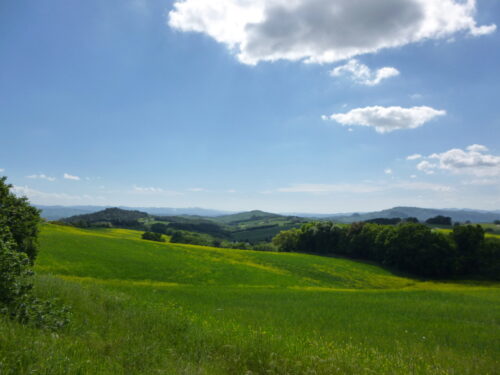
By Francesco Bianchini
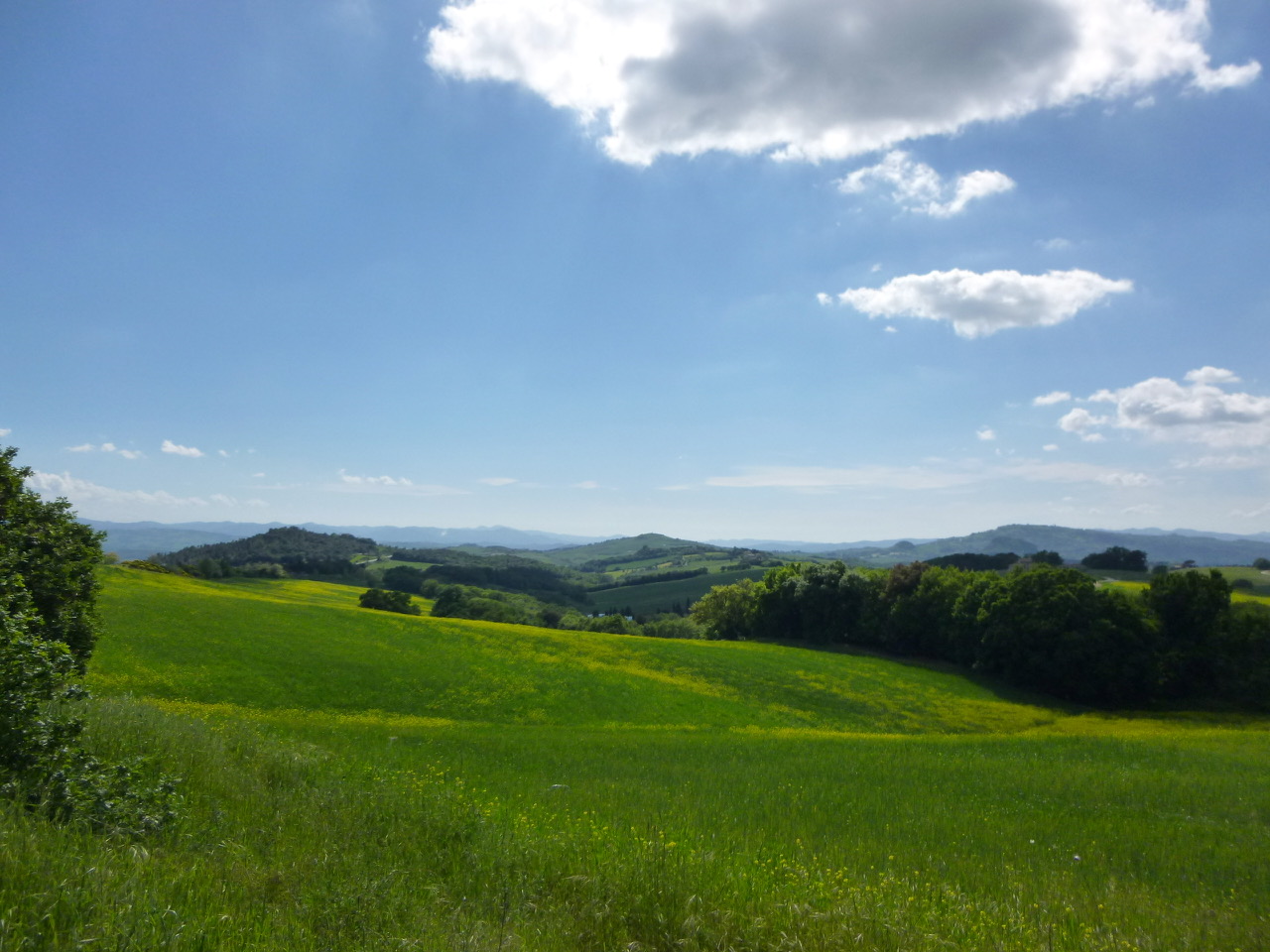
Wandering in the southern Tuscan countryside
I grew up in a hill-top village in Umbria and absorbed its habits and atmosphere in all pores. Every time I discover a new hill-town I am elated at the thought of fortuitous encounters – the cat who heedlessly tramps downstairs onto a street, the smell of laundry hanging in certain alleys, the view of the countryside that opens suddenly at the bottom of a square, the glimpse through an open window of a painted ceiling, the worn baptismal font in a deserted church – of how time has shaped in centuries each stone with the same naturalness with which water digs its path. As I walk, I smell the air, breathe the aromas of kitchens, and have a foretaste of flavors that dinners and lunches have in store.
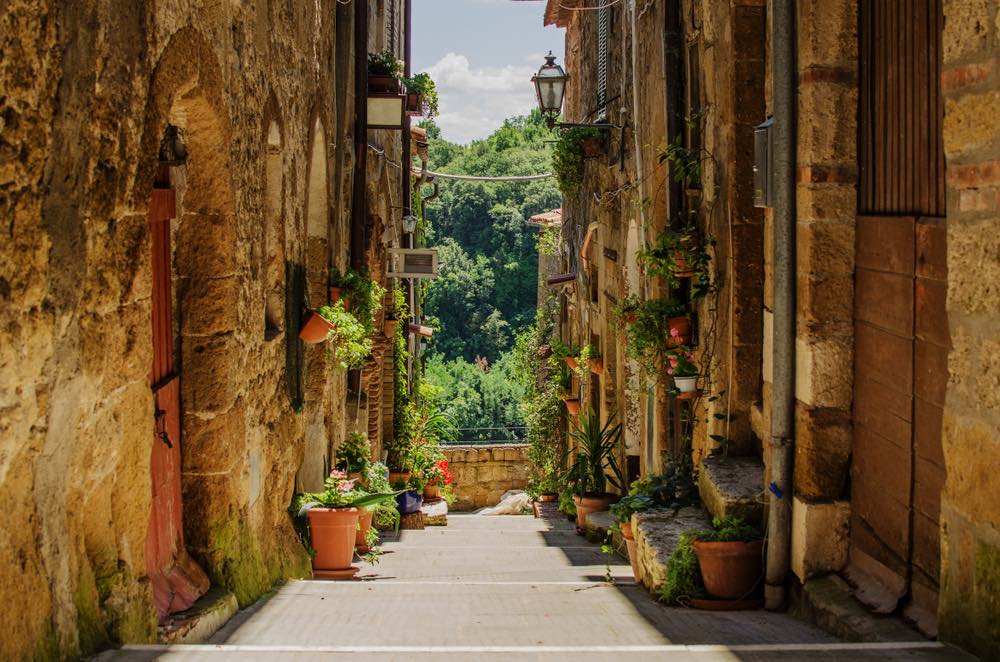
A treat at the end of the street
It was the last few days of October. As often happens when I decide to spend a weekend in solitary exploration of the villages of central Italy – Volterra, San Gimignano, Sovana – the weather did not promise anything good. A fat cloud and an eloquent drop of rain stubbornly appeared at each consultation. Departing alone is a bit like leaving your comfort zone. Elements that stand in the way of the happy prospect of a journey’s delights is immediately read as a bad omen, and shakes one’s determination. But it could also go well, I thought, maybe there would be no rain, perhaps limited to a nighttime shower. When I arrived in Pitigliano, in the heart of tufaceous Etruria between Lazio and Tuscany, the clouds were so high and compact that there was no immediate concern. I walked at the foot of the escarpment on whose top the city stands with its forbidding walls. The overhanging cliffs had been cleared quickly by setting fire to weeds. The blackened stubble, the earth mixed with ash, the gray battlements against a gray sky created a disturbing spectacle worthy of a scene from the Lord of the Rings, and suggestive of an imminent party for Halloween.
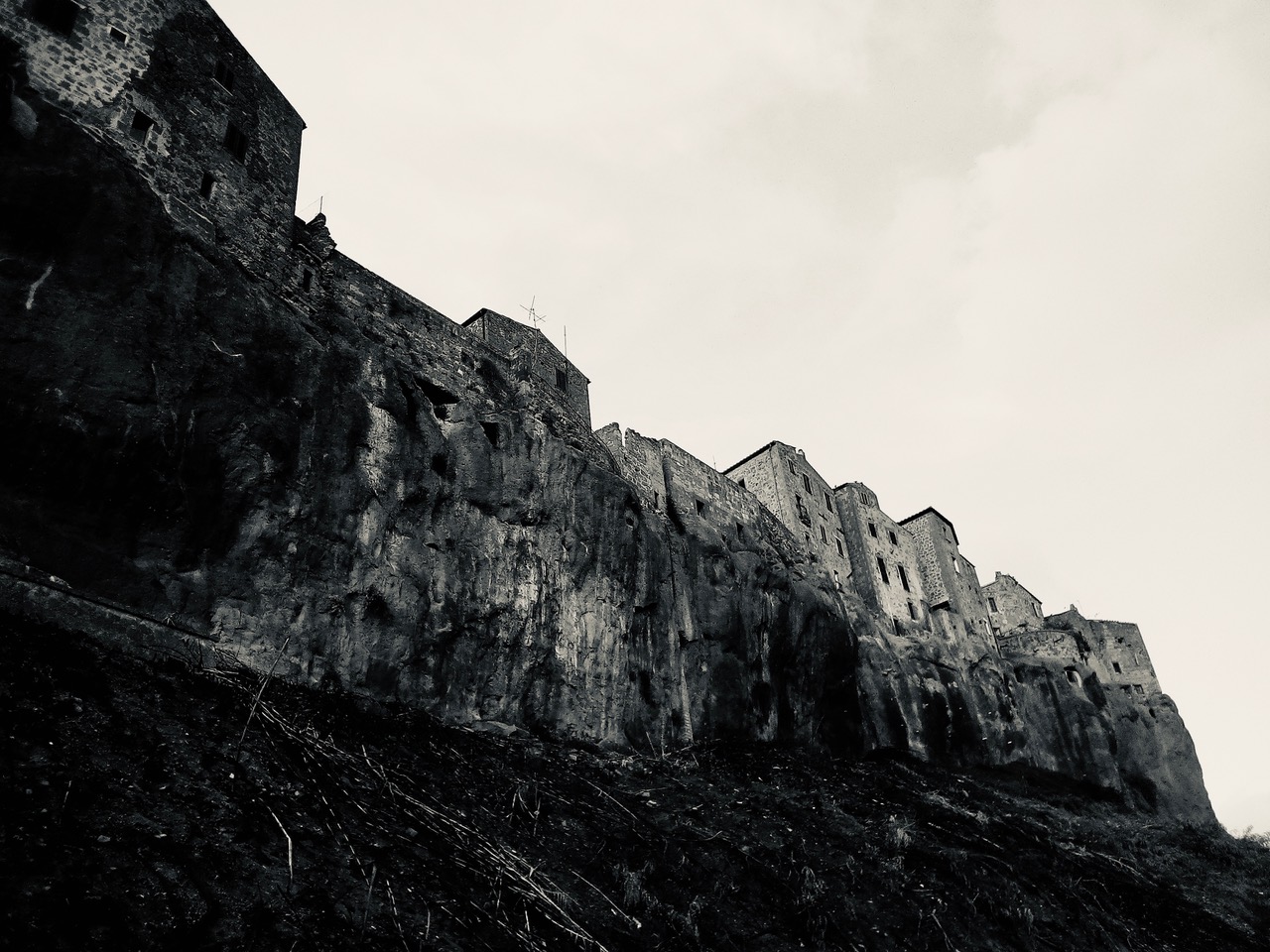
The daunting walls of Pitigliano
From the height of my room in an ancient palazzo, I descended to the age-old restaurant where I had booked dinner. They recognized me before I spoke: a lone client had the effect of a punch in the eye on that Saturday night that was still warm and festive. The hostaria was getting full as an egg. I purposely arrived a little earlier than rush hour and was seated at a table in a passage that crossed from the first room to the second. I had before learned the impact of lone diners, sitting at skimpy and probably limping tables, squashed under a pass-through counter, and next to the mineral-water crates and the bathroom door. Worse still is any table close to the entrance, exposed to continuous drafts from the swinging doors.
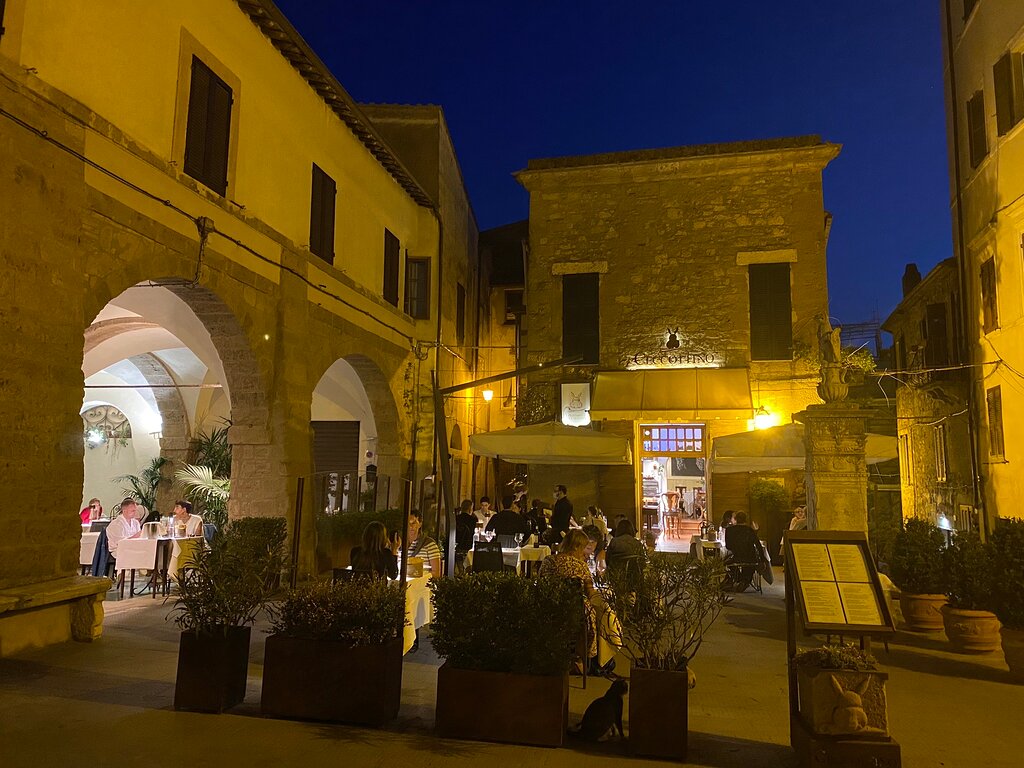
Hostaria del Ciccottino, Pitigliano
A friend told me about a lunch at Locanda Cipriani in the lagoon of Venice where she’d been placed next to the front door. She tried in vain for a change of table and – short on arguments – finally hinted of an article she was preparing for the New York Times that would be affected by her disappointment. Her fable bounced from mouth to mouth through the room, whispered by the staff, and in no time she was escorted to another table by the apologetic headwaiter.
My situation hadn’t gone that badly for me: my table – close to the wall and dignified by a beautifully starched tablecloth, enjoyed a semblance of intimacy. Yet certainly no one paid any attention to me. From time to time in restaurants with friends or a large party you seem sealed in the bubble. But alone, I could only distract myself by gazing around: for example, at a group that had ordered Florentine steaks which arrived sizzling on cast-iron trays and carved at the table for everyone to ooh and ahh. And there was the middle-aged couple next to me who kept sending contradictory signals: husband and wife? Unlikely, to judge by their suggestive body language. Seeming a bit spoiled and condescending – perhaps here on a clandestine tryst – they continually turned to the waiter to settle their slightest hesitations. Why did she keep showing him pictures of babies on her cell phone? And what was the point of his answering business calls while she was ordering wines she clearly knew nothing about?
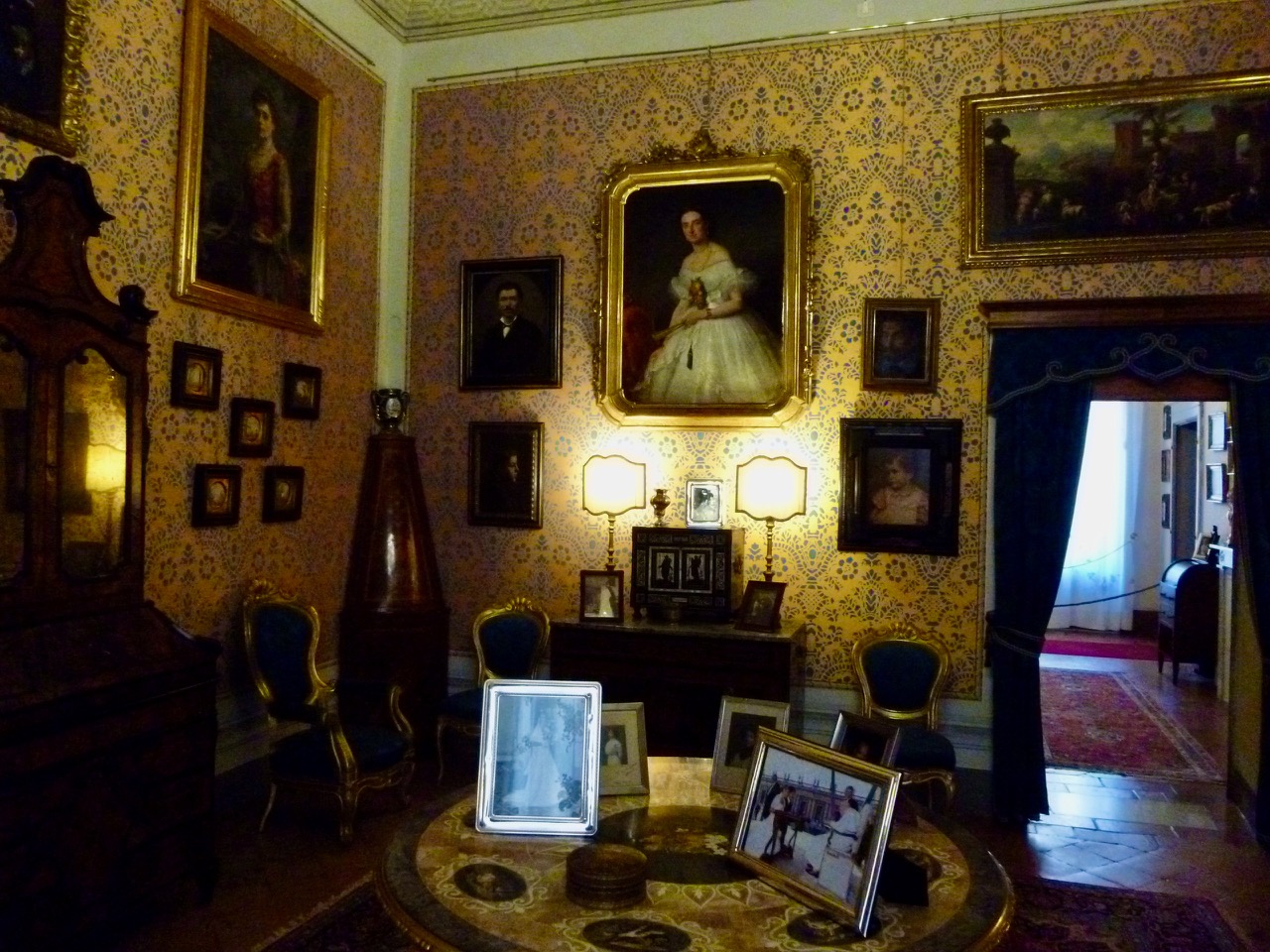
Tuscan interior, Palazzo Viti, Volterra
In the middle of my observation, my mushroom soup ‘recommended by the chef’ arrived. If this suggests the generic vegetable puree you couldn’t be more wrong. This steaming soup, served in a deep white porcelain dish, was sumptuous and succulent, with diced porcini mushrooms floating in heavy broth, perfumed by a sprig of mint. Staring at the rich hues of brown, ochre, and ivory in the golden iridescence of the broth was like contemplating the tesserae of a Byzantine mosaic. With spoon in mid-air, I snapped out of my trance and started dipping into the soup. That’s when I noticed that, at the back of the room, the waitress and the chef were studying me from the kitchen pass-through. She had drawn his attention and he was now sticking his sharp nose out. The scene repeated itself when my main dish arrived, a rabbit cacciatore of incomparable tenderness, moistened by a thick sauce, not at all oily, and flavored with sage.
I decided to play along with the game and feed the misunderstanding, beginning to taste with studied concentration; I admired the color and sniffed the fresh and delicate Pitigliano white wine I had chosen – even pretending, full of imposture, to dictate notes on my mobile phone. Although I hadn’t ordered dessert, the waitress arrived at the end of the meal anyway with some, plus a whole new bottle of wine. The chef was paying homage to me with a custard ‘on the house’ – a creamy Tuscan flan scented with cinnamon and lemon, and sprinkled with vanilla sugar. When I started toward the exit, the owner – having being alerted – intercepted me and accompanied me to the door. Had I had a good meal? Would I soon return?



